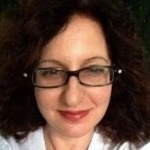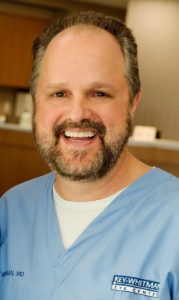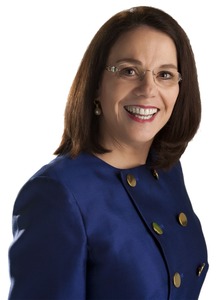Media Training: Nonverbal Cues May Drown Out Your Messaging
How to Address the Problem and Connect with More Potential Patients
// By Lisa D. Ellis //
 You go to great lengths to develop strong messages that will resonate with your target audience and reinforce your brand. But what your spokespeople don’t say may come across louder than their actual words. This is because body language is essential when it comes to establishing trust and connecting with viewers on television and video. Yet many clinicians send the wrong message with their nonverbal clues and this could be turning off potential patients.
You go to great lengths to develop strong messages that will resonate with your target audience and reinforce your brand. But what your spokespeople don’t say may come across louder than their actual words. This is because body language is essential when it comes to establishing trust and connecting with viewers on television and video. Yet many clinicians send the wrong message with their nonverbal clues and this could be turning off potential patients.
Making the Most of Advertising and Media

Jeffrey Whitman, M.D., President and Chief Surgeon of the Key-Whitman Eye Center
Jeffrey Whitman, M.D., President and Chief Surgeon of the Key-Whitman Eye Center, has become well versed in the art of nonverbal communication to market his organization, which is one of the largest refractive surgery practices in Texas, with six locations, including a new headquarters in Dallas. But he realized a while back that his extensive medical training had not prepared him on how to make the most of strategic advertising and media relations.
“Back in the mid ’80s, most medical practices didn’t advertise, at least in the Dallas/Fort Worth markets. It was really frowned upon,” he says. “But when one of our smaller competitors started running cataract commercials, it impacted our volume. We knew that if we didn’t start marketing to let our community know who we were and how we could help them, we would continue to lose market share, which would hurt our practice. That’s when we made the decision to start marketing, too,” he says. His approach was to pursue a combination of paid media opportunities (such as commercials) and also earned media (chances to be interviewed by the media as part of a timely news piece or feature).
The only problem was that being interviewed on television, radio, or even for print media was not a natural thing for Whitman, nor for most of his staff members and colleagues.
“Our expertise is in medicine, not in how to answer questions from reporters. I don’t remember any classes on that in medical school or in residency programs. As doctors, we’re not prepared for communicating on live news segments,” he says, adding that the media is also looking for short sound bites and if they end up editing what you say in an interview, it may not come out as you intended. “It’s also not just about giving information in an interview—it’s about connecting to your audience during the interview. If you don’t do that, the interview won’t help you or your practice,” Whitman adds.
Seeking Help from an Expert
To help him strengthen his ability to connect with prospective patients and avoid common pitfalls, he enlisted the help of Melinda Marcus, M.A., C.S.P., President of Marcus & Associates in Dallas, who goes beyond standard media training to bring in a unique focus on the nuances of health care, coupled with a deep understanding of nonverbal communication, creating a powerful combination.“Melinda has an outstanding, award-winning record in advertising, but what’s more important to us is that she focuses on what generates results for our practice—and that goes beyond advertising and extends into patient engagement and the overall experience of coming to our offices,” he says.
You wouldn’t do surgery without training, so why go on camera without it?”
Jeffrey Whitman, M.D.
President and Chief Surgeon
Key-Whitman Eye Center
Getting media training and coaching for himself and some of his colleagues from Marcus was a strategic move that really increased Whitman’s confidence in how to convey the right tone to his target audience. “Melinda is an expert in body language and is an experienced coach in vocal delivery and developing messaging. That’s a great combination to help us deliver our information in a way that resonates with the audience,” he says. She also taught him to practice before interviews. “Melinda actually did some on-camera reporting for one of the local news stations back in her grad school days, so she anticipates the tricky questions and prepares us for those. Of course, the more experience you get on camera, the more comfortable you feel in interviews.”
Little Gestures Make Loud Statements
But the biggest benefit he has gotten, he admits, is in understanding how small changes in body language can make a big difference in the way you come across to viewers.
“Melinda works with us on our hand movements, posture, and body positions when we are on camera. One example is keeping your legs together, so the camera doesn’t end up showing a crotch shot. That sounds funny, but if you watch any seated interviews with male doctors on camera who are not trained, they often make this mistake,” he says.
Whitman also uses his newfound knowledge of body language and nonverbal clues to strengthen his relationships with patients. “By learning how to recognize the nonverbal signals of stress, even if a patient doesn’t say something, I’m able to ask questions to bring out any concerns so we can discuss them. That lets the patient know I care about them and it leads to a more trusting relationship.”
Further, he relies on his understanding of body language and vocal delivery when he speaks at medical conferences. “I now feel much more comfortable in front of audiences, and that has led me to seek out those opportunities. I’m getting feedback from other doctors that they like my relaxed conversational tone when I am speaking at conferences, and that really is an extra bonus,” he says.
Measuring Success
When it comes to concrete results, Whitman says a combination of both paid and earned media has worked together to increase brand awareness for the practice. “We feel we are on the right track because over the past 10 years, the practice has doubled. However, it’s very difficult to measure success in terms of which new patients came from which effort because it all really works together. We do hear from patients who mention seeing us in a news story, and we know it helps our optimization of our website because hits on the stories are trackable,” he says.
Key-Whitman’s in-house call center also sees bumps in calls when the practice’s commercials run and when they have a news interview. “One example that comes to mind is when we were looking for candidates for an FDA study. As always, Melinda prepped me for talking to the media. During a TV interview about the upcoming FDA study, I presented the opportunity for patients to apply to participate, and we ended up getting more applicants than any other practice in the U.S. After that one interview, our phones rang off the walls. That was clear proof to us that if we present what we have to offer in the right way, people will respond,” Whitman says.
Another sign the efforts are paying off is the influx of national celebrities and professional athletes who choose Key-Whitman for their eye procedures. “These are people who could go anywhere, and they come to us because they trust our reputation when it comes to their eyes and their vision,” he says.
Fitting into the Bigger Picture
Marcus says Key-Whitman Eye Center’s experiences are certainly not unique. Most organizations can benefit from sharpening their media savvy and learning how to present in the most advantageous way. Yet not all medical professionals are as open as Whitman is to learning these skills, so she often has to educate them about why it matters.
“From an industrywide standpoint, health care is facing a ‘trust crisis’ because patients are viewing the industry very differently than in years past. In a 2014 survey by the World Economic Forum, people were asked, ‘Which sector is most trusted for their leadership?’ Health care was rated lower than sectors such as business, education, and international organizations,” she says. That’s why moving forward, she stresses that it’s so important to find ways to build trust within your marketplace. To this end, she has delved deeply into broadening her own understanding of body language and nonverbal messaging, to guide her clients in the most effective ways.
Desire to Learn Is Half the Equation

Melinda Marcus, M.A., C.S.P., President of Marcus & Associates
“What I found helped in those cases was to send them the scientific research on body language, so they could see it’s not just ‘fluff.’ Also, I would take it one step at a time, often asking them to do just one specific thing while on camera. What happens is these doctors start progressively getting feedback from their patients and family members telling them how well they did on TV. Then the doctors start buying into the coaching and actually ask for more,” she adds.
She also regularly teaches clients the differences between doing a commercial and preparing for a media interview.
“Producing a commercial is controlled and we have the power to do multiple takes and to pick just the best takes for the editing. Media interviews are often live or, even when taped, the reporters have control over how the interview is edited,” she says.
She suggests health care organizations looking to improve patient survey ratings and to attract more patients have an outside nonverbal communications expert conduct a review of their marketing and communication efforts. Marcus observes, “It’s difficult— if not impossible—for people to identify their own blind spots, particularly when it comes to nonverbal communications. About 95 percent of the photos I see on health care websites, ads, and brochures are featuring people showing negative body language.”
This creates an interesting opportunity for health care organizations because if they can understand how to improve their nonverbal communications, it can dramatically increase their ability to influence perception, and positively reinforce their most important messages.
Key do’s and don’ts for making the most of media opportunities
Melinda Marcus, M.A., C.S.P., President of Marcus & Associates, shares this advice for health care marketers.
DON’T:
- Just focus on the words. While the words are important, research shows your nonverbals make a bigger impression than your words.
- Assume the directions you get from the photographer or the videographer will make you come across positively. Most of the bad body language you see in marketing is the result of camera people unknowingly directing the spokesperson to show negative body language.
- Wing it. Some doctors don’t want to practice their answers because they are confident they can just do it on the fly. That creates huge opportunities for disastrous messaging to go out to your market.
- Memorize the message. Viewers can tell when you are talking with them or just reciting a memorized message. The latter will hurt your ability to connect because they feel you are not authentic.
- Approach it like you are a witness on the stand when you are planning for an interview. If you do it right, this is a great opportunity to position yourself and your organization in a way that differentiates you in the marketplace.
DO:
- Use your hands when you talk. Research shows that people will perceive you to be more confident and competent.
- Speak in a lower pitch. It creates an impression of authority.
- Slow down your pacing when you speak. It’s natural to speed up your pace when you’re nervous, but viewers find that off-putting.
Lisa D. Ellis is Editor of Strategic Health Care Marketing.

